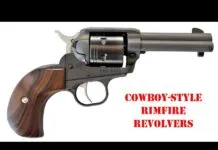Along with our 30-06s tested elsewhere in this issue, we also shot a hunting-appropriate bolt action, the Sako 75 Finnlight in 308 Win. The line was officially discontinued for the 2007 model year, being replaced by the 85 series, but there are plenty of the 75-series bolt rifles floating around the used and NIB market.
When we first thought about testing a Finnlight 75 in 2004, they listed for $1,267. We never tested the gun during its heyday, but were always on the lookout for good guns selling for lower prices, and we came across a sample and decided to put it through its paces.
A check of recent completed auctions on GunBroker.com showed that 75 Finnlights described as NIB or 95% or better condition sold for $900 to $1100-substantially more than the very good Savage 111 reviewed on page 15. We wondered, would the expensive name-brand bolt gun be as good as the Savage. Heres what we found:
Sako 75 Finnlight 308 Win., $995 (NIB)
We thought this was a great-looking rifle. The contrasting and highly functional grip areas were of a soft and tactile rubber-like material that gave good traction on the rifle. One bad feature of the stock was that when tapped, it felt hollow, and some of us felt that gave it a cheapened aspect. Another very bad feature was the poor fitting of its rock-hard recoil pad. It stuck out the right side a sixteenth of an inch, and showed nearly as much of the plastic stock on the left. The pad did have a rounded top for easy mounting, and stayed put on our clothing well. It also was shaped to allow fast working of the bolt with the rifle mounted. But this was a light rifle, and had a sharp and nasty kick to all loads fired in it. It desperately needed a softer pad, we thought.
The barrel was floated all the way back to the action, like the Savage 111. The barrel-to-stock gap was small. Inletting was excellent. The gaps around the edge of the floorplate and back of the action were tiny, and the stock was made the same height as the metal. Clearly this stock was made for this action, and not simply made to fit. The stock also had stainless sling-swivel studs.
The metal was all matte stainless, and nearly white in color. The 20.3-inch barrel was fluted to cut weight. The fluting, in our limited testing, did little to dissipate heat, but it looked good. The three-lug bolt required only about 60 degrees to open, and it worked well, easily, and positively. Sako provided integral scope bases with the excellent stainless Optilock rings.
The bolt came out by pressing a button on the left rear of the action and, its safety was on the opposite side of the action. With the safety slid all the way rearward to On, the bolt was also locked down. Pressing a small button at the front of the safety permitted opening the bolt to get a loaded round safely out of the chamber. The detachable magazine took care of the rest.
The magazine held five rounds. It came out of the rifle-too easily, we thought-by pressing on a recessed button at the front edge of the floor plate.
We tested with Remington 180-grain Core-Lokt, Cor-Bon 125-grain, and with 168-grain Federal Gold Medal Match ammunition.
At the range, we found the Sako didnt much like the Remington 180-grain Core-Lokt ammunition. Our best group with it was 1.9 inches, with a 2.9-inch average. That was maybe good enough for hunting, but we expected much better. With Cor-Bons 125-grain loads things picked up, and we got 1-inch-average three-shot groups. The outstanding Federal Gold Medal Match also gave 1-inch groups. We had determined the Sako had distinct likes and dislikes, something the individual owner would have to dope out on the bench before taking this rifle hunting.
Our Team Said: We thought this was a pretty good rifle, taking into account its intended use as a lightweight hunting tool. It had Sakos normally excellent trigger pull, breaking cleanly at just under 4 pounds. We were not happy with the poor fit of the recoil pad, and we would surely replace it with a softer one if we owned the rifle. This rifle was obviously designed to be carried a lot and shot only a little. It stung from the bench, and while a better recoil pad would help, theres no getting away from the fact that light rifles kick hard, if they have any power at all. Costing nearly twice as much as a similarly powered new Savage 30-06, we cant see any need to shop for the Sako 75 Finnlight.


























